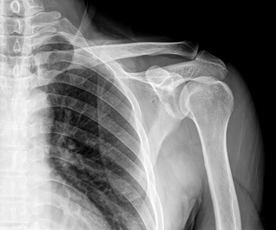- Home
- |
- Join
- |
- Insureds
- |
- Claims
- |
- Patient Safety/Risk
- |
- About
- |
- Contact
- |
- News of Mutual Interest

Failed communication lawsuits are not rare. Specifically, failure to communicate incidental findings in radiologic exams are a common theme in medical malpractice. Whether it is listed on the initial report or an overread that comes later, ordering providers have a duty to their patients to inform them of results and document the discussion. Having a streamlined and standardized process for communicating results to providers and then patients is imperative to patient safety and to minimize provider liability.

A 49-year-old male presented to the ED for abdominal pain. Dr. A ordered a CT of the abdomen/pelvis and the preliminary radiology report revealed no abnormalities except evidence for enteritis. The patient was discharged to follow-up with his PCP in 2 days. Although the patient had a PCP, no specific name was listed in the chart.
The following day Dr. B was on duty in the ED. Another radiologist overread the study from the prior day and found a 2.5 cm mass-like opacity in the lung. The final radiology report detailing this finding noted "findings were discussed with Dr. B in the emergency room at 10:13 a.m."
The patient filed a lawsuit against Dr. A, Dr. B, and an advanced provider alleging no one advised him of the suspicious mass before a different study months later rediscovered the mass after metastasis had occurred.
Is your follow-up process similar to this?
The initial ED physician, Dr. A, said he did not receive a copy of the final CT report and was not informed of the overread. His expectation would be if a discrepancy notice was provided by the radiologist, it would be faxed to the ED. Their process is for the advanced provider (AP) on duty to follow-up on the discrepancy and contact the patient. The AP assigned to the morning shift is expected to review the printed stack of faxes each day. If the morning AP cannot complete the review, the AP on the next shift may continue to review the faxes but, depending upon workflow, they may remain for another AP to review the next morning. The AP will call the patient or sometimes the patient’s PCP (if listed) to notify them of a discrepancy. Any follow-up done is supposed to be documented in the EMR.
Dr. B has no recollection of a conversation with the radiologist. Per his process, if he had been made aware he would have contacted the patient to report the overread and would document in the EMR. The plaintiff then pursued and put effort into a theory the ED physician was busy and forgot, or the advanced provider received the report by fax per their process but failed to follow-up.
The AP did not recall anything about this case. The AP testified if she had been the person to pull the CT report off the printer and review its contents, she would not have taken further action because the report stated, "Findings were discussed with Dr. B in the ER at 10:13 am." By their process, there would have been nothing further to do since the report stated the discrepancy had been discussed with another provider.
This case not only demonstrates the importance of communicating incidental findings, but it shows how gaps or loose processes lead to preventable patient harm. The case closed in confidential settlements by Dr. B and the AP.
Click Here! to submit your answers to the questions below for CME credit as well as a chance to enter our quarterly VISA gift card raffle.
1. True or False: The ordering provider is responsible to inform patients of clinically significant incidental findings both listed in the impression of the report as well as those buried in the body of the report.
2. For patients with clinically significant incidental findings discovered at the time of the initial encounter, the provider should:
3. For patient with clinically significant incidental findings discovered at the time of a radiology overread:
4. Which of the following are good patient safety practices?
Click Here! to submit your answers to the questions below for CME credit as well as a chance to enter our quarterly VISA gift card raffle.